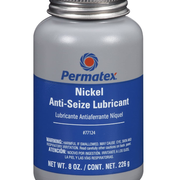Stockmanreef
Well Known Member
I am about to put in the exhaust and the plans state to use anti seize on the slip joints. I quick search says that copper based anti seize may not be the best and that Nickel might be better. I have Loctite LB8008, which is a copper based anti-Seize. I assume that anti-seize should go on the exhaust bolts as well.
I have read that Mouse Milk is used in certain areas. Is this for things like the ball joints?
Thanks
ken
I have read that Mouse Milk is used in certain areas. Is this for things like the ball joints?
Thanks
ken





